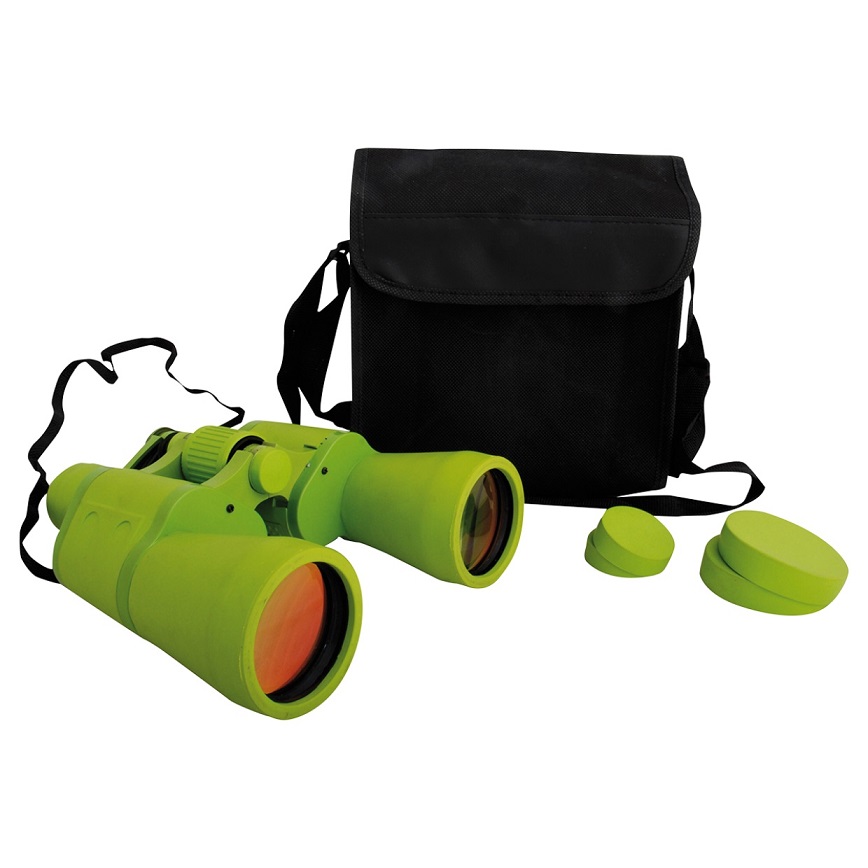Bird Watching Binoculars
Binoculars
Binoculars are an essential tool for anyone with an interest in wildlife, particularly birds. No matter how small your garden or how close the feeders are, looking at the birds through binoculars can transform the experience, revealing subtleties of plumage and behaviour that you would otherwise be unaware of, and greatly increasing your enjoyment.
Once you have a pair of binoculars you can take them with you when you go for walks or on holiday, extending their use well beyond your own garden. At close range it becomes possible to view the birds as individuals and begin to get an appreciation of the pecking order between species and individuals, or the different ways that the various species feed.
When the birds are further away a flock of small brown birds seen with the naked eye may become a flock of Linnets when seen through binoculars, and the clod of soil in the middle of a field may become a crouching Pheasant or hare. It doesn’t take long for binoculars to become essential items to take on a walk!
Cutting through the jargon
It’s easy to feel bewildered by all the technical details when comparing binoculars, but with a little knowledge it becomes much easier to understand what’s on offer.
What does 10 x 50 mean?
The first figure is the magnification, in this case “10 times”, so objects will appear approximately ten times larger – or closer – than they would with the naked eye, so a flock of geese 1,000 metres (0.6 miles) away will seem to be just 100 metres away.
The second figure is the diameter of the objective (largest) lens in millimetres, in this case 50mm. Larger sizes provide a brighter image and a wider field of view, but increase the weight.
Field of View
In simple terms the distance between the left and right extremes of vision at a range of 1,000 metres (1 kilometre). Larger figures mean a brighter image and make it easier to “find your target”.
Close Focus
Sometimes the object you wish to look at can be fairly close, such as a warbler in a wood or reed bed, or dragonflies or butterflies that alight close at hand. The close focus value is, unsurprisingly, the closest range at which the optics will still focus. In simple terms most of us are 1.5 to 2 metres tall, so a close focus distance of 2 metres will allow objects within our own body length away to be viewed.
Eyecups
These keep your eyes at the correct distance from the eyepiece. For spectacle wearers the eyecups are twisted or folded down so that your eye remains at the right distance from the eyepiece, restoring image brightness and field of view to close to that enjoyed by people who don’t wear spectacles.
Coatings
Not all of the light that enters the objective lens makes it as far as your eye. Internal reflections and scattering as the light passes through the various lenses and prisms that make up your optics will reduce the amount of useable light.
These inefficiencies can be significantly reduced through a combination of precision manufacture and sophisticated lens coatings, and this is what accounts for much of the price difference between good optics and excellent optics. You have to look through a top-end pair of binoculars in poor light to really appreciate the difference in definition and colour.
Diopter Adjustment
Simply a way of adjusting the binoculars to compensate for a difference in performance between your left and right eye. The normal way of setting the diopter adjustment is to use the main focus adjustment to focus on an object with your left eye (keeping the other one closed) and to then close your left eye and use the diopter adjustment to alter the focus until the image is in focus for your right eye. Some brands of binoculars have the diopter adjustment on the left barrel, but the principle is the same.
With the adjustment set you should enjoy true binocular (three dimensional) performance as both eyes should be seeing an object that is in focus.
Choosing the right binoculars for you
What will you be doing with the binoculars?
It’s tempting to start with the ideal magnification, but the most important question to ask is what you want to use the binoculars for or, more accurately, how will you be using them?
Will you be spending a lot of time looking through them, or do you want a pair to have on hand just in case you see something interesting?
In the first case you will probably be using the binoculars more than you will be carrying them, so you need to concentrate on the optical performance. A pair of full-size binoculars will best meet your needs.
In the second case, when you will be carrying the binoculars more than you will be looking through them, the priority will be for compactness so that they can be carried in a shirt pocket, caddy bag or whatever. Compact or pocket binoculars are the best choice for you.
Magnification & field of view
The greater the magnification the smaller the field of view, and vice versa. For general birding the most popular choice is a magnification or ‘power’ of 7x or 8x, which gives a good field of view for looking at things that are mobile or well hidden and fairly close (say, within 100 metres), such as dragonflies or woodland birds. Sometimes the greatest challenge is finding the target through the binoculars and a larger field view makes this much easier.
10x is the greatest magnification that can be hand-held without excessive shaking of the image, and is ideal for use in open country or over water where the subjects may be some distance away, or in hides where there are shelves to steady your arms on.
Close focus
If you are interested in dragonflies, butterflies or other insect groups a close focus of less than 4 metres will reduce the likelihood of having to walk away from something to get a good look at it. Young birds and tired migrants will sometimes appear at very short range so this figure is worth looking at even if you only ever look at birds.
Robustness
Are you a fair weather person, happy to stow the optics away in bad weather, or are you resigned to the occasional soaking for your hobby? It’s important to decide because waterproof optics are more expensive and heavier (most waterproof optics have gas-tight bodies that are filled with nitrogen). What you get for the extra money is peace of mind and reliability, while a soft, wide strap deals with the extra weight.
Spectacle wearers
If you need to wear glasses for long distance work the eyepiece design is important. The best solution is a twist-down eyepiece, particularly if you sometimes share your binoculars with someone who doesn’t wear glasses. Clearly this is less significant if the eyepiece will be kept in the down position.


